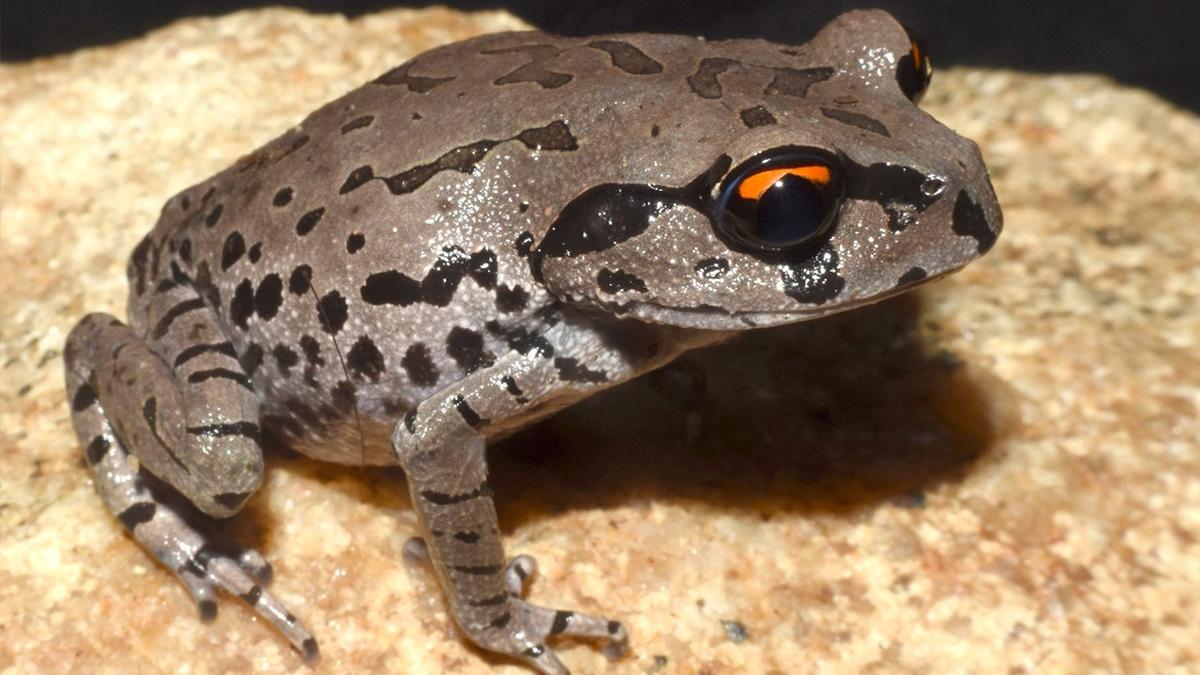Leptobrachium aryatium, a new-to-science frog recorded from a reserve forest on the edge of Guwahati. Photo: Special Arrangement
GUWAHATI A study spanning 21 years has yielded a new species of frog named after an Assam college that helped a locality shed its identity as a hub of country liquor production.
Guwahati’s Aryanagar used to be called Sharabbhati, meaning a place for brewing liquor. The locality was renamed in 2022 to give it the respectability that the local authorities felt Arya Vidyapeeth College, one of Assam’s most reputed educational institutions in the vicinity, deserved.
Leptobrachium aryatium, a new-to-science frog recorded in the Garbhanga Reserve Forest on the southwestern part of Guwahati bordering Meghalaya, is now wearing the college’s name.
The frog has been described by four zoologists, associated with Arya Vidyapeeth College either as alumni or faculty members, in the latest issue of the journal Zootaxa. They are Jayaditya Purkayastha of Guwahati-based NGO Help Earth; Dipankar Dutta of the University of Science and Technology, Meghalaya; Jayanta Gogoi of Arya Vidyapeeth College, and Saibal Sengupta of Assam Don Bosco University.
“This frog stood out with its fiery orange-and-black eyes, a unique reticulated throat pattern, and a smooth, rhythmic call at dusk. Scientific analysis of its appearance, DNA, and call patterns confirmed that this was a previously unknown species,” Dr. Purkayastha said.
The genus Leptobrachium, comprising a group of stocky frogs with broad heads, relatively short hind limbs, and distinctively coloured eyes, currently consists of 38 species and is widely distributed across Southern China and India to islands of the Sunda Shelf and the Philippines.
Studied first in 2004, the frog from the Garbhanga Reserve Forest was initially identified as the Leptobrachium smithi. “Not much work was being done on this genus for a long time. Recent molecular and morphological studies revealed significant cryptic diversity within the genus, describing several new species, particularly in Southeast Asia and the Indo-Burma region,” Dr. Purkayastha said.
The quartet of zoologists reverted to their old data on their subject, and after tallying them with the new studies on the other species in the genus, established Leptobrachium aryatium as a distinct species.
The study has put the spotlight on the Garbhanga Reserve Forest, a biodiversity hotspot that has been threatened by urban sprawl and habitat destruction.
A reserve forest that helps regulate Guwahati’s climate and water systems, Garbhanga is home to elephants, butterflies, and rare birds, apart from reptiles and amphibians such as Leptobrachium aryatium.
Published – April 14, 2025 01:10 pm IST
